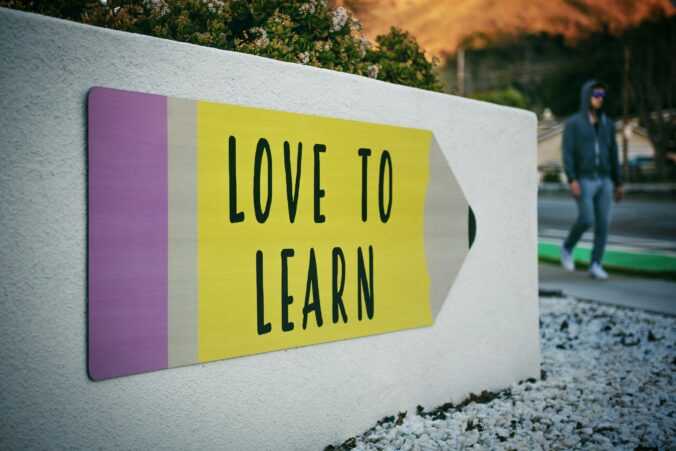Feature Photo by Tim Mossholder on Unsplash
Open Pedagogy:
Open Pedagogy is an educational approach that emphasizes collaboration, transparency, and the sharing of knowledge, where both educators and students actively participate in the creation, adaptation, and distribution of learning materials. Rooted in the principles of the open education movement, it encourages the use of open educational resources (OER), but goes beyond just content to engage students in the process of knowledge creation.
Students are not just consumers of knowledge but co-creators. This might involve contributing to openly accessible textbooks, creating public digital projects, or engaging in peer-led learning activities. Open Pedagogy promotes clear, accessible processes in the classroom, giving students insight into how materials are developed and encouraging open communication.
Instead of limiting learning to the classroom, Open Pedagogy often encourages interaction with broader communities, allowing students to contribute knowledge that benefits society as a whole.
Traditional versus Open Pedagogy:
Traditional teaching often focuses on delivering information to students through textbooks and lectures, with students being passive recipients. In Open Pedagogy, students take on an active role in creating, adapting, and sharing content.
Moreover, traditional methods rely on fixed materials like textbooks or syllabi that are rarely changed. Open Pedagogy, on the other hand, uses OER, which can be adapted and modified by both educators and students to fit specific needs.
Additionally, traditional education tends to emphasize individual work and evaluation. Open Pedagogy encourages collaboration among students, and often across institutions or with external communities.
While traditional assignments tend to be private (e.g., essays submitted to instructors), Open Pedagogy often has students create work that is publicly shared, fostering a sense of contribution to a larger body of knowledge.

Feature Photo by Alexander Grey on Unsplash
Empowerment Through Open Pedagogy:
Open Pedagogy empowers students by giving them agency in their learning. When students create content that has real-world applications, it fosters a deeper sense of purpose and relevance. They also learn critical skills in collaboration, digital literacy, and creative problem-solving. By contributing to publicly available resources, students see themselves as contributors to society, not just learners in a classroom. Teachers can rethink their roles as facilitators of knowledge rather than sole authorities. Open Pedagogy encourages instructors to collaborate with their students, fostering an environment where they can learn from student contributions and new insights. Educators can also adapt and share resources freely, ensuring that learning materials are continuously improving and more accessible to all.
Open Educational Resources:
The passage highlights the benefits of Open Educational Resources (OER), including the elimination of costly textbooks, which reduces the financial burden on students. OER allows educators to access high-quality, customizable materials that can be adapted to fit their teaching styles and students’ needs. It encourages collaboration among educators and institutions to improve and share resources. OER can be updated regularly to reflect current knowledge, ensuring that learners always have access to the latest information. Additionally, OER promotes inclusivity by allowing the incorporation of diverse perspectives into the curriculum.
Open Educational Resources (OER) have the potential to significantly transform the educational landscape by providing free and openly licensed educational materials that anyone can access, use, modify, and share. The widespread adoption of OER can impact not only how education is delivered but also who can access it and how knowledge is created and shared.
Equitability and Accessibility:
The passage explains that Open Educational Resources (OER) remove cost and geographical barriers, providing high-quality educational materials to learners from all economic backgrounds, especially in low-income or underserved areas. OER can be adapted to meet diverse learner needs, making them more inclusive for individuals with disabilities, non-traditional learners, and those in different languages. OER promotes lifelong learning by offering open access to educational resources beyond formal settings. It also empowers educators from marginalized communities to create culturally relevant content, promoting equitable representation in education.
Global Trends in OER:
The passage outlines the global rise of Open Educational Resources (OER) driven by the need for accessible, affordable, and adaptable learning materials. Countries like the U.S., Canada, and Brazil are promoting OER through policies and initiatives, with institutions like MIT and the UK Open University pioneering OER repositories. UNESCO advocates for OER to meet Sustainable Development Goal 4, leading to international collaborations. A growing trend is the localization of OER in countries like South Africa and India, ensuring materials are culturally and contextually relevant. Digital platforms like OpenStax and advances in AI are making it easier to distribute and adapt OER, with some institutions implementing “Z-degree” programs (zero textbook cost degrees) and states integrating OER into K-12 education. OER promotes equity by reducing educational costs, especially in low-income regions, and has seen increased use during the COVID-19 pandemic, particularly in developing countries where resources are scarce.
The Future of OER in Higher Education by Lindsay Josephs
Challenges of OER:
Firstly, the biggest hurdle is funding the ongoing creation and maintenance of OER. While initial grants or government support may drive creation, sustainable models for keeping materials current are still being debated.
Secondly, ensuring the quality of OER remains a concern. Since OER can be created by anyone, there are challenges in maintaining rigorous academic standards, though initiatives are emerging to provide peer review or accreditation.
Thirdly, many educators and institutions still lack awareness or understanding of how to use OER effectively. Training teachers to adapt or create OER is essential for its widespread adoption.
Lastly, in regions with limited internet connectivity, even freely available OER can be challenging to access. Investments in infrastructure and offline solutions are crucial for such areas.
Opportunities of OER:
OER encourages collaboration across borders, allowing educators to share, remix, and improve resources collectively. This fosters a culture of open knowledge sharing and innovation in education.
The adaptability of OER allows educators to customize content to suit their teaching needs and students’ learning preferences, promoting a more personalized approach to education.
In many developing countries, OER presents a unique opportunity to bridge the educational divide, providing access to quality materials where they are otherwise unavailable.
Understanding Creative Commons Licensing:
The passage emphasizes the importance of Creative Commons (CC) licensing in Open Educational Resources (OER) by providing a legal framework for using, adapting, and sharing content while respecting creators’ rights. CC licenses offer transparency, ensuring that educational materials can be freely shared and modified. Different CC licenses define specific permissions, such as allowing commercial or non-commercial use, the creation of derivatives, or the requirement to share adaptations under the same terms.
There are six main CC licenses:
- CC BY (Attribution) allows use, adaptation, and commercial use with attribution.
- CC BY-SA (Attribution-ShareAlike) requires derivatives to have the same license.
- CC BY-ND (Attribution-NoDerivs) allows sharing but no modifications.
- CC BY-NC (Attribution-NonCommercial) allows adaptations for non-commercial purposes.
- CC BY-NC-SA (Attribution-NonCommercial-ShareAlike) adds the same license requirement to non-commercial adaptations.
- CC BY-NC-ND (Attribution-NonCommercial-NoDerivs) is the most restrictive, allowing sharing but no changes or commercial use.
For instance, an educator might use a CC BY-SA license for a textbook to allow adaptations with the condition that modified versions remain open. Understanding these licenses ensures legal compliance and ethical use of OER in creating, adapting, or sharing educational content.
Examples of Applying CC Licenses Responsibly:
I might create an open-access textbook and license it under CC BY-SA to allow for wide usage and adaptation by educators globally, with the condition that any derivative works are also shared openly.
If I create educational videos or interactive learning tools, I might opt for CC BY-NC-ND, allowing them to be shared as-is for educational purposes but preventing commercial use or alteration.
In an international collaborative educational project, I might use CC BY-SA to ensure that all contributors can freely adapt each other’s work while maintaining the spirit of open sharing.
Attributes of Open Pedagogy:
The passage explains that Open Pedagogy fosters inclusive and participatory learning by focusing on collaboration, transparency, student-centered learning, reflective practice, and accessibility. These practices encourage teamwork, clear communication, and student involvement in content creation and real-world problem solving. Reflective learning helps students understand how they learn, while accessibility ensures that materials are available in multiple formats to meet diverse needs. Together, these approaches create a more equitable, engaging educational environment that empowers students to take ownership of their learning.
